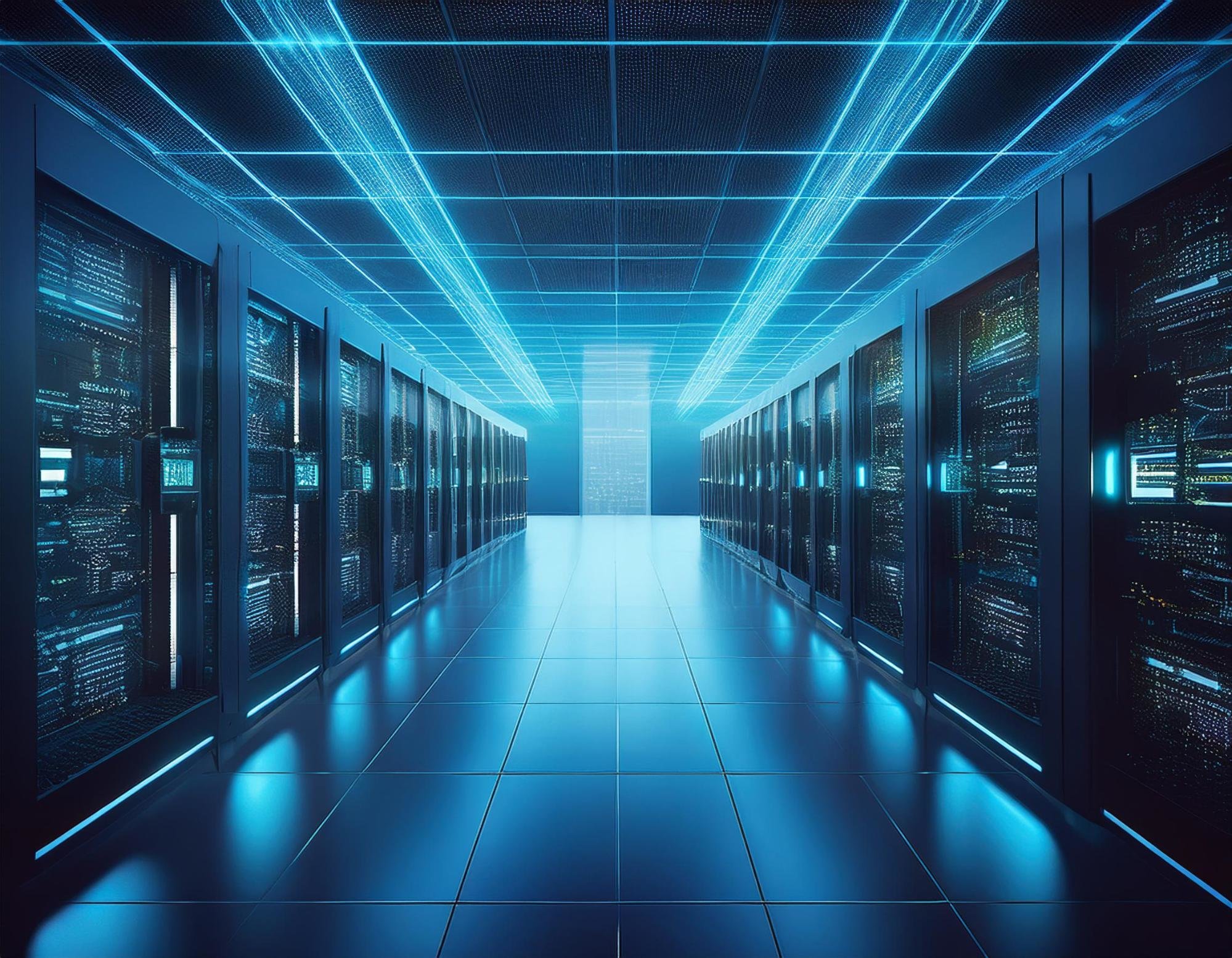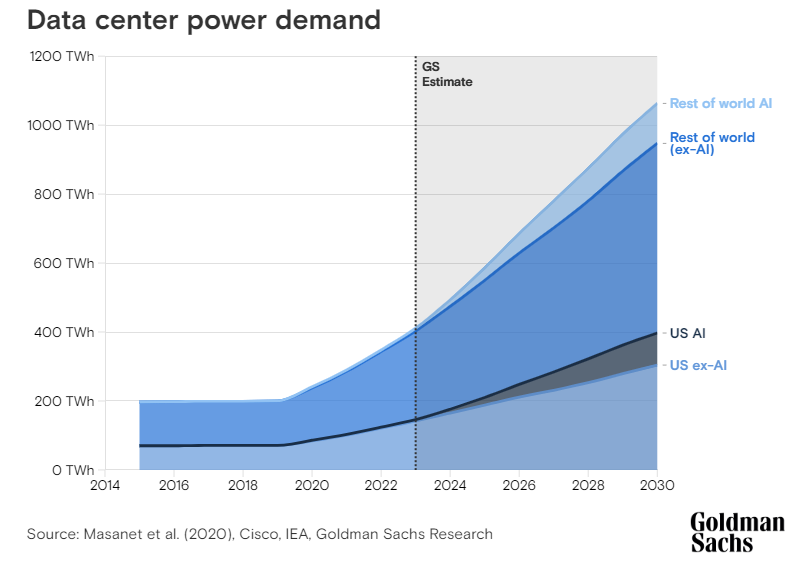Transforming the Data Center Industry: The New Era and Challenges Brought by AI

This blog is primarily based on the article "AI is poised to drive 160% increase in data center power demand" published by Goldman Sachs on May 14, 2024. The article provides a detailed analysis of the impact of rapid AI development on data center power demand. This blog analyzes the latest trends in data centers, the impact of AI, and the importance of systems such as Uninterruptible Power Supplies (UPS) in this changing landscape, with original commentary and analysis for Japanese readers.
1. Latest Trends in the Data Center Industry
The data center industry is currently undergoing a major transformation. In particular, the rapid development and proliferation of Artificial Intelligence (AI) is dramatically changing the nature and operation of data centers.
1.1 Surge in Power Demand
Data center power demand had been relatively stable for years. From 2015 to 2019, despite a tripling of data center workloads, power consumption remained nearly constant at about 200 terawatt-hours annually. This was mainly due to continuous improvements in data center power efficiency.
However, since 2020, the pace of efficiency improvements has begun to slow, and data center power consumption has started to trend upward. According to Goldman Sachs Research analysis, data center power demand is predicted to increase by 160% by 2030. This means that data centers, which currently account for 1-2% of global power consumption, will increase to 3-4% by 2030.
1.2 Changes in Geographical Deployment
New trends are also emerging in the choice of data center locations. In Europe, demand for data centers is increasing in two types of countries. One is the Nordic countries, Spain and France, which have cheap and abundant power sources such as nuclear, hydro, wind, and solar. The other is countries like Germany, the UK, and Ireland, where major financial services and technology companies are clustered and which offer incentives such as tax benefits.
1.3 Focus on Sustainability
The increase in data center power consumption has made its environmental impact significant. Goldman Sachs Research points out that data center carbon dioxide emissions could double between 2022 and 2030. This "social cost" is estimated to reach $125 billion to $140 billion (in present value).
In response, many technology companies are accelerating investments in renewable energy and efforts to commercialize new nuclear power technologies. There are also expectations that AI could contribute to emission reductions by promoting innovation in healthcare, agriculture, education, and energy efficiency.
2. The Impact of AI on Data Centers
2.1 Explosive Increase in Power Demand
The proliferation of AI is dramatically increasing data center power demand. For example, a single ChatGPT query requires 2.9 watt-hours of electricity, about 10 times that of a Google search (0.3 watt-hours). Goldman Sachs Research predicts that the increase in data center power consumption due to AI will reach about 200 terawatt-hours annually between 2023 and 2030. Goldman Sachs analysts estimate that by 2028, AI will account for about 19% of data center power demand.

Source:from Goldman Sachs webpage
2.2 Need for Infrastructure Investment
The rapid proliferation of AI necessitates large-scale investments in data center infrastructure. For instance, in the U.S., it's predicted that investments of about $50 billion in new power generation capacity will be needed for data centers alone by 2030. Additionally, to accommodate the increase in data center power consumption, about 3.3 billion cubic feet per day of new natural gas demand will be created by 2030, requiring the construction of new pipeline capacity.
The situation is even more serious in Europe. Europe, with the world's oldest power grid, is expected to spend about 800 billion euros ($861 billion) on transmission and distribution, and about 850 billion euros on investments in solar, onshore wind, and offshore wind energy over the next decade to power new data centers.
Goldman Sachs research indicates that between 2023 and 2033, data center expansion and accelerated electrification could increase Europe's power demand by 40%, possibly up to 50%. Currently, about 15% of the world's data centers are located in Europe. By 2030, the power demand of these data centers will be equivalent to the current combined consumption of Portugal, Greece, and the Netherlands.
2.3 Acceleration of Technological Innovation
While AI development presents challenges to the data center industry, it also creates new opportunities. Efforts are underway to improve data center operational efficiency and optimize energy consumption using AI. For example, Google DeepMind's AI system has significantly improved energy efficiency by optimizing data center cooling systems.
AI is also contributing to the development of new cooling technologies and power management systems. Innovative solutions such as liquid immersion cooling technology and AI-driven predictive maintenance systems are improving the efficiency and reliability of data centers.
3. The Importance of Systems like UPS
3.1 Need for Stable Power Supply
With the increase in AI workloads, stable power supply in data centers has become more critical than ever. AI model training and inference processing require massive computational resources, and even slight power disturbances can have serious impacts. Therefore, the role of power backup systems such as Uninterruptible Power Supplies (UPS) has become increasingly important.
3.2 Evolution of UPS
Conventional UPS systems were primarily designed to protect equipment from short-term power outages and voltage fluctuations. However, in the AI era, more advanced functions are required. The latest UPS systems have the following features:
- High-speed responsiveness: Fast switching capabilities to respond to instantaneous power demand fluctuations of AI workloads
- Scalability: Easily expandable design to meet the rapidly growing demands of data centers
- Energy efficiency: Functions that achieve optimal power supply in coordination with AI-based power demand prediction
- Remote monitoring and management: Predictive maintenance using AI and real-time performance optimization functions
3.3 Importance of Energy Storage Technology
As data center power demand increases and the use of renewable energy expands, the importance of energy storage technology is also growing. New technologies such as large-capacity battery systems, flywheels, and fuel cells complement UPS functions and improve the stability and sustainability of data center power.
3.4 Innovation in Cooling Systems
The increase in AI workloads also increases the heat generation in data centers. To address this, cooling systems are also evolving. New technologies such as liquid immersion cooling and direct chip cooling are being introduced, which can cool AI equipment more efficiently than conventional air cooling systems. These new technologies not only improve energy efficiency but also contribute to increasing data center density and reducing installation area.
Conclusion
The rapid development and proliferation of AI are significantly transforming the data center industry. The industry is changing various aspects, including surging power demand, the need for infrastructure investment, and the acceleration of technological innovation. In this transformation, the importance of power backup systems such as UPS and cooling technologies is increasing, and these systems continue to evolve.
On the other hand, data centers' increasing power demand and environmental impact have become unavoidable challenges. Approaches considering sustainability, such as using renewable energy, improving energy efficiency, and introducing new cooling technologies, are essential.
While AI brings challenges to the data center industry, it also has the potential to be the solution. Technologies such as AI-powered power management, optimization of cooling systems, and predictive maintenance will be key to improving data centers' efficiency and reliability.
The data center industry is now at the threshold of a new era brought about by AI. To overcome this transformation and build a sustainable and efficient future for data centers, it is necessary to respond flexibly while balancing technological innovation and environmental considerations. It is important for all related stakeholders, including data center operators, technology companies, and energy companies, to cooperate and address these challenges.
The future of data centers in the AI era will be a crucial factor in determining the sustainability of our digital society. There is no doubt that future technological innovations and industry efforts will attract significant attention.
* Please understand that the description in this blog includes interpretations based on the author's experience and subjective opinions. In addition, the technical information contained in this blog does not grant any guarantee or license to the intellectual property rights or other rights of the Company or a third party.
